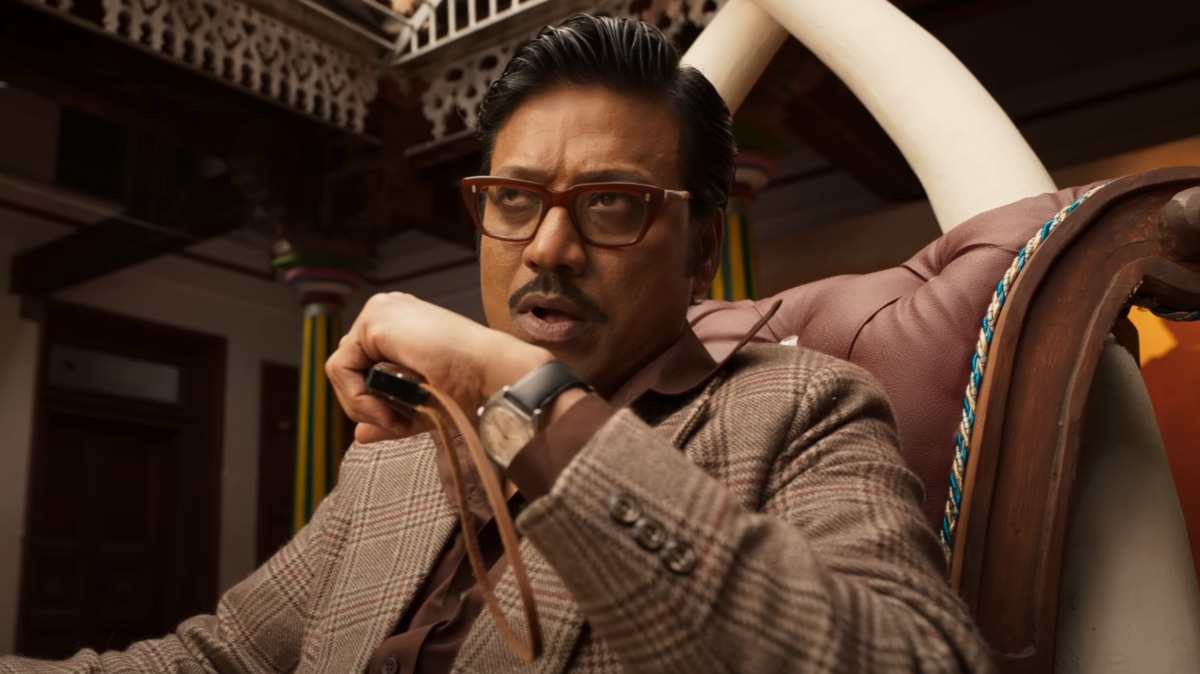Karthik Subbaraj’s 2014 creation, “Jigarthanda,” a captivating meta-gangster tale intertwining filmmaking with the underworld, dared to merge these contrasting realms. Centered on a filmmaker risking his life to craft a story around a notorious gangster, the film boasted a confident narrative, surprises, and abundant nods to the art of cinema. Nearly a decade later, a more seasoned Karthik returns with “Jigarthanda Double X,” amplifying every aspect associated with its predecessor. This sequel embraces the essence of the original while channeling a spaghetti western vibe, crafting a plot-rich narrative, aptly described as a ‘political masala western,’ continuously delivering surprises and aspiring to impress with its ambitious vision.
The essence of Karthik Subbaraj’s “Pandyaa Western film” in “Jigarthanda Double X” resonates through its aesthetics, the hero’s journey, and a storyline rooted in a 1960s incident. During the filming of an American movie named “Caesar” in Melakuyilkudi near Madurai, the protagonist, Clint Eastwood, symbolically gifts a handheld Canon 8mm camera to a tribal boy named Alli, who had requested a gun. Embracing his admiration for Eastwood’s spaghetti westerns, Alli grows up perceiving the camera as a weapon. When this camera falls into the hands of Ray Das or Kirubai, played by SJ Suryah, it transforms into a potent tool. Thus, “Jigarthanda Double X” evolves into an explosive and unique tribute to cinema, incorporating elements of love, and notably, elephants.
The sequel artfully explores duality, interweaving two starkly contrasting worlds to unfold a sprawling narrative. One world, painted in vibrant shades of orange, brown, and red, depicts the streets of Madurai, while the other, steeped in hues of green and orange, immerses itself in the forests of Kombai Sambala.
Set in 1973, the storyline follows K Rathnakumar, a corrupt police officer pursuing the forest brigand Shettani, involved in illegal tusker hunting. However, Rathna’s focus shifts when his brother, Jeyakodi, faces a critical impediment in his career as an actor-minister. To eliminate his political rival, Karmegam, Rathna dispatches four criminals on covert missions to dismantle Karmegam’s support network. Among them, Kirubai, an innocent prisoner, is assigned to assassinate Caesar, a dominant gangster in Madurai, by assuming the guise of a filmmaker and exploiting Caesar’s aspiration to become Tamil cinema’s first dark-skinned hero.
The saga spanning 172 minutes densely packs various narrative elements, occasionally overwhelming audiences with its intricacies, especially in the initial phase, where characters are introduced in a somewhat conventional manner. However, Karthik’s films are known for their depth, layering humor into serious sequences and offering multifaceted dimensions that invite subsequent viewings. Notable references to Tamil cinema, akin to the first film, serve as intriguing details, such as Bava Chelladurai’s character, paying homage to the late filmmaker S Balachandar.
What truly distinguishes “Jigarthanda Double X” is Karthik’s adept portrayal of the parallel journeys of the two protagonists, traversing distinct worlds. Blending reality with fiction, the film alludes to real-life incidents while symmetrically framing a camera against a gun and a gun against a spear. Kirubai emerges as the primary protagonist, overshadowing Caesar, who becomes a mere pawn in the larger narrative. Both characters undergo journeys of self-discovery, one combating fear and the other reclaiming himself from agony.
The performances by Suryah and Lawrence stand out remarkably. Suryah captivates with his portrayal of a character grappling with moral dilemmas, having witnessed contrasting facets of the same individual. Lawrence, while embodying the ruthless gangster, evokes empathy for Caesar’s true identity. Similar to the tonal shift in the original, where Sethu’s character undergoes a transformation, the sequel executes a shift with conviction and depth, drawing audiences into Karthik’s unexplored narrative territory. Despite minor drawbacks like sudden plot diversions and melodrama, Santhosh Narayanan’s exceptional score compensates, enhancing the film’s appeal.
“Jigarthanda Double X” emerges as Karthik Subbaraj’s most heartfelt work. Retaining the essence of its predecessor while standing independently, this sequel defies comparison. It boldly magnifies ambitions, solidifying its status as a genuine “Double X” expansion of “Jigarthanda.”
Here’s the trailer:











